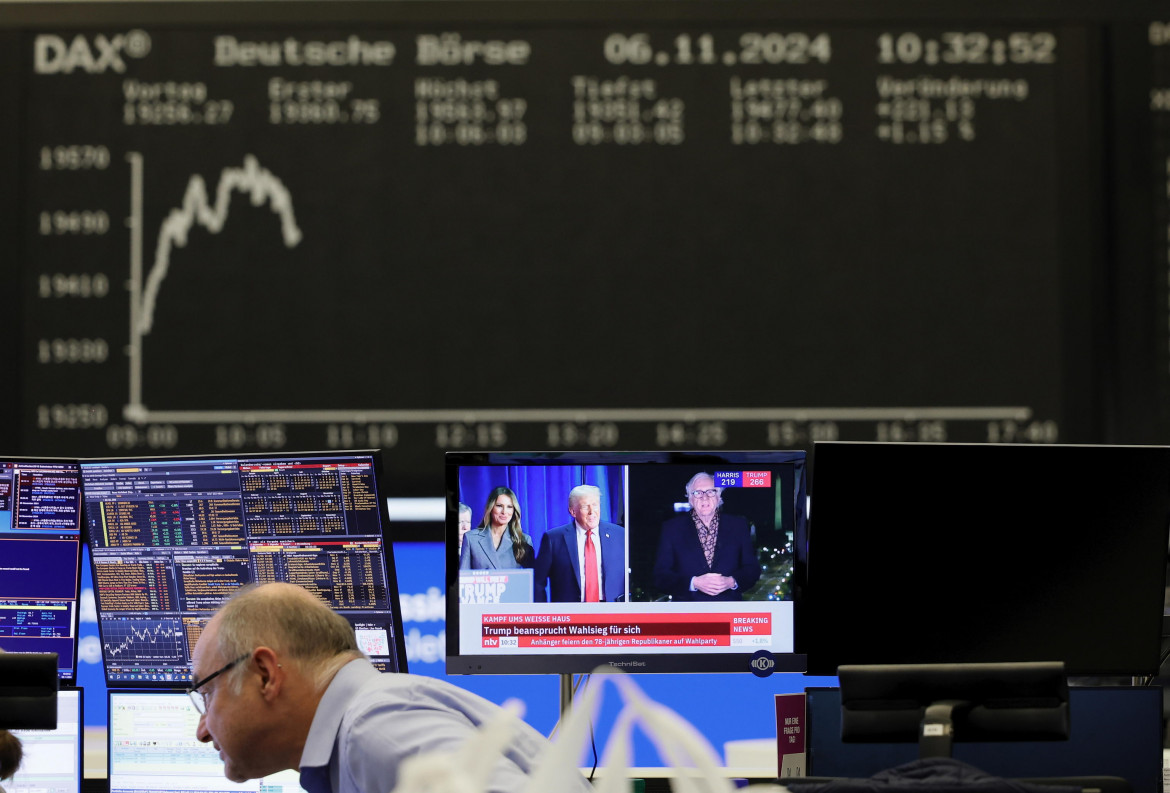Commentary
Working class Trump voters will be disappointed by Trumponomics 2.0, shifting power to banks
From taxation to social spending and labor regulation, “Trumponomics 2.0” will be business as usual: economic policy that is dutifully at the service of American capital.

According to ABC exit polls, more than two-thirds of American voters say they are dissatisfied with the economic situation left behind by the Biden administration. The working class is complaining of a drop in the purchasing power of their wages of up to three percentage points a year for three years. Wage erosion seems to have had a major impact on the election. Many workers who had previously voted for the Democrats stayed away from the polls this time or chose Donald Trump.
The fact that a part of that remnant of the working class that still bothers to register to vote has turned away from them is perhaps the most tangible evidence of the failure of the American Democrats. However, if their hope is that the new president will improve workers' living conditions, we can already say that it will be dashed. From taxation to social spending and labor regulation, “Trumponomics 2.0” will be business as usual: economic policy that is dutifully at the service of American capital.
Trump has insisted on passing a strengthened version of his “Tax Cuts and Jobs Act,” with which he had lowered the maximum tax on corporate profits from 35 percent to 21 percent in 2017. He now wants to further reduce it to 15 percent, to the applause of the big shareholders on Wall Street. In addition, the new president has announced major cuts to the federal levy on overtime pay and on larger pensions. According to the Committee for a Responsible Federal Budget, the ensuing lower revenues could mean a hole of up to 30 percent in the Social Security budget. This mirrors another of Trump’s key goals: to squeeze the remaining public welfare system even more, aiming to restore the absolute dominance of private insurance.
In order to support the consumption of the working class, Trump has revived a solution much beloved by the financial bigwigs: tax measures to halve interest rates on credit cards and lower the cost of loans for the purchase of appliances, cars and homes. One possible implementation is for banks to receive tax benefits if they reduce charges for indebted consumers. With this goal in mind, if it is necessary to loosen the constraints on a new debt boom, that’s not a problem: Trump is intent on removing the last regulatory ties that keep finance in check. In many ways, his policies look like a rerun of the roaring years before the 2008 crisis. The speculative bubble inflating the U.S. economy will expand further before it bursts. In the end, it will leave workers in the dirt, bankrupt.
In this bleak scenario of domination by capital, there are those who are arguing that the working class can at least be happy about the announced halt to immigration. In reality, the data show that migrants go where the economy grows. This means that the influx of foreign workers is not a cause of the worsening employment and wages of locals, but rather a consequence of their improvement. Xenophobic ideology is still a winner at the polls, but continues to lose when tested with scientific evidence.
The hopes of the self-styled tribunes of the plebs in the pro-Trump camp also rest on the revival of U.S. economic isolationism. Trumpian “America first” rhetoric is focused on blocking imports and aiming to bring multinational companies' manufacturing plants back to U.S. soil to remedy the jobs crisis in inland areas. On closer inspection, however, the data show that Trump's protectionism is by no means a new idea. From Obama to Biden, U.S. administrations have been raising trade and financial barriers higher and higher for more than 15 years. This is what the outgoing Treasury secretary called “friend shoring”: doing business only with “friends” and keeping “enemies” at bay, especially if they are creditors to America. Trump is simply shouting from the rooftops about a strategy of dividing the world economy into opposing blocs that has also been adopted by other presidents, albeit more discreetly. This is an undoubted favor for U.S. business owners, who increasingly fear incursions of eastern capital into the U.S. and areas of the world under American control. As for the amazing outcomes for native workers promised by everyone, so far they don’t seem to have materialized.
Some might argue that, at the very least, Trump is pursuing a peace-focused strategy, although it appears to be a cynical one: let Russia have the occupied territories and end the war in Ukraine. In reality, with this possibility the new president aims to resurrect an old Nixon goal: to divide Russia and China in order to preserve American hegemony in the world. The difference being that Nixon sought to make deals with the Chinese to isolate Soviet Russia, while today Trump wants to make deals with the Russians to isolate China. His idea is that the Chinese are the real threats to American economic primacy, and the United States’ barriers, sanctions and guns should be pointed at them specifically. It’s not really a “pacifist” agenda as much as it is another building block toward global military escalation.
Originally published at https://ilmanifesto.it/trumpnomics-2-0-via-anche-gli-ultimi-lacci-alla-finanza on 2024-11-07
